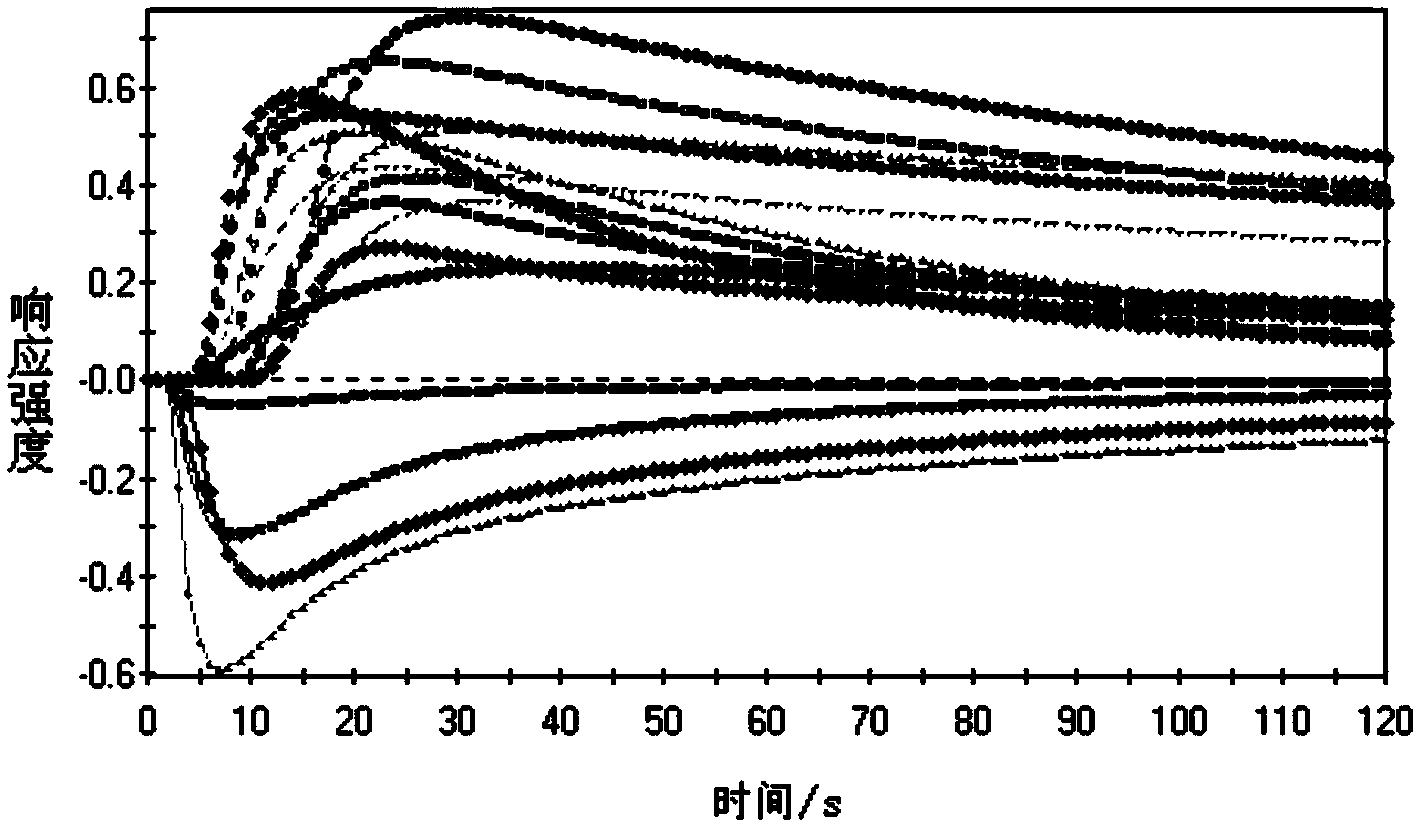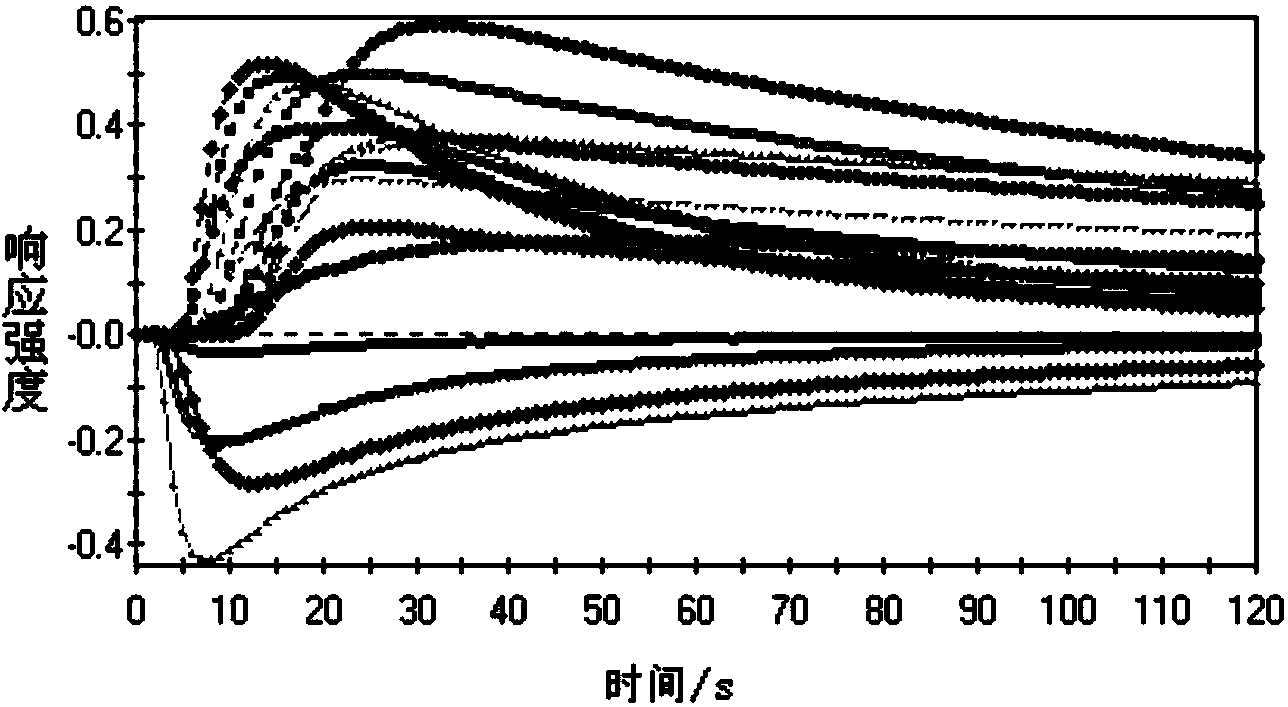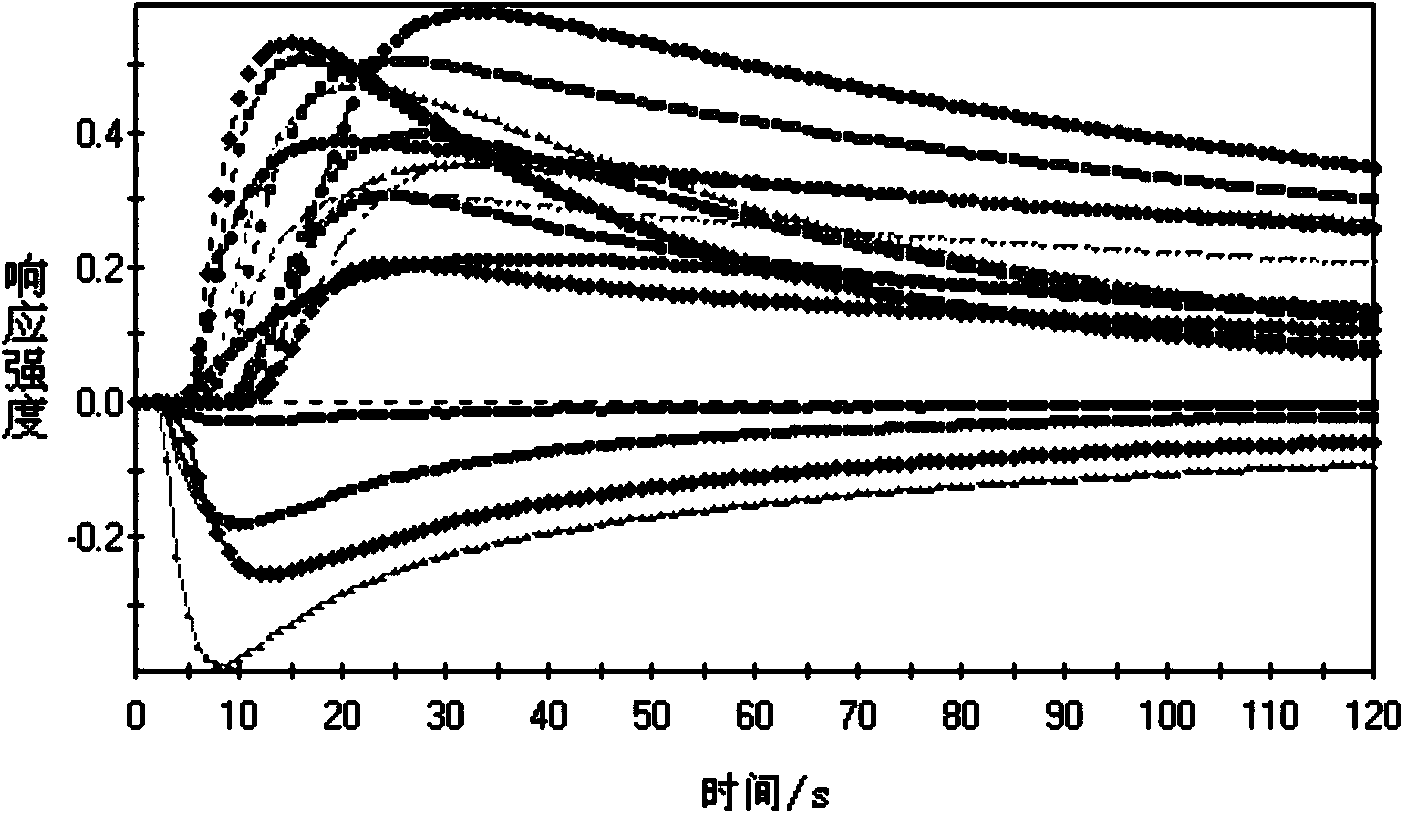Classified identification method for fish sauce
An analysis method and fish sauce technology, applied in the direction of analyzing materials, material analysis by electromagnetic means, measuring devices, etc., can solve the problems of complex smell of fish sauce, difficult sensory discrimination of fish sauce, reflecting the quality of fish sauce, etc., so as to improve the product quality. Quality and market competitiveness, filling can not be accurate and standardized, experimental results are clear and intuitive
- Summary
- Abstract
- Description
- Claims
- Application Information
AI Technical Summary
Problems solved by technology
Method used
Image
Examples
Embodiment 1
[0041] A method for classifying and identifying fish sauce, used for assessing fish sauce samples of different grades, comprising the following steps:
[0042] 1) The volatile organic compounds in different grades of fish sauce standard samples were measured by electronic nose analysis method, and the response intensity data of different grades of fish sauce standard samples in the electronic nose sensor matrix were obtained.
[0043] The fish sauce standard samples of different grades are predetermined standard samples divided into six grades, namely: special grade, first grade, second grade, third grade, fourth grade and defective fish sauce standard samples.
[0044] The electronic nose adopts the FOX4000 system of French Alpha M.O.S company, and the selected electronic nose sensor matrix is LY2 / LG, LY2 / G, LY2 / AA, LY2 / GH, LY2 / gCTL, LY2 / gCT, T30 / 1, P10 / 1, P10 / 2, P40 / 1, T70 / 2, PA2, P30 / 1, P40 / 2, P30 / 2, T40 / 2, T40 / 1, TA2 sensors. The determination of volatile organic compou...
Embodiment 2
[0065] The method for the classification and identification of fish sauce of the present embodiment is basically the same as the method of embodiment 1, the difference is:
[0066] Electronic nose sensor matrix consists of LY2 / LG, LY2 / G, LY2 / AA, LY2 / GH, LY2 / gCTL, LY2 / gCT, T30 / 1, P10 / 1, P10 / 2, P40 / 1, T70 / 2, PA2 , P30 / 1, P40 / 2, P30 / 2 sensors.
[0067] The response intensity data of the fish sauce standard sample obtained by the above-mentioned electronic nose sensor matrix is subjected to principal component analysis, and a fish sauce classification and identification model is established. The obtained principal component analysis diagram is as follows: Figure 10 As shown in the figure, it can be seen from the figure that label 1 is super-grade fish sauce, and the abscissa distances between the standard fish sauce samples with labels 2, 3, 4, 5, and 6 and the super-grade fish sauce with label 1 increase in turn, that is, according to The abscissa increases in order of super-...
Embodiment 3
[0070] A method for classifying and identifying fish sauce, used to identify whether fish sauce samples are qualified, comprising the following steps:
[0071] 1) Using the electronic nose analysis method in Example 2, measure the volatile organic compounds in the qualified fish sauce standard sample, and obtain the response intensity data of the qualified fish sauce standard sample in the electronic nose sensor matrix.
[0072] 2) Statistical analysis method was used to conduct partial least squares analysis on the response intensity data of the above fish sauce standard samples, and a fish sauce classification and identification model was established by the nonlinear regression method of principal component analysis.
[0073] 3) Determine the volatile organic compounds in the fish sauce sample by the electronic nose analysis method in step 1), and obtain the response intensity data of the fish sauce sample in the electronic nose sensor matrix.
[0074] 4) Substituting the ab...
PUM
 Login to View More
Login to View More Abstract
Description
Claims
Application Information
 Login to View More
Login to View More - R&D
- Intellectual Property
- Life Sciences
- Materials
- Tech Scout
- Unparalleled Data Quality
- Higher Quality Content
- 60% Fewer Hallucinations
Browse by: Latest US Patents, China's latest patents, Technical Efficacy Thesaurus, Application Domain, Technology Topic, Popular Technical Reports.
© 2025 PatSnap. All rights reserved.Legal|Privacy policy|Modern Slavery Act Transparency Statement|Sitemap|About US| Contact US: help@patsnap.com



